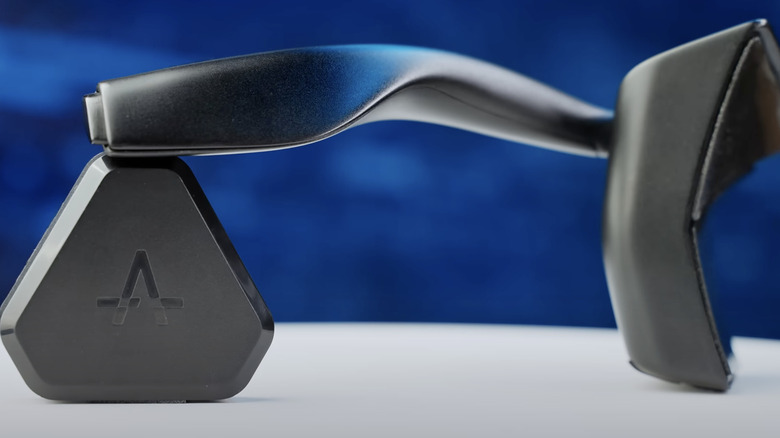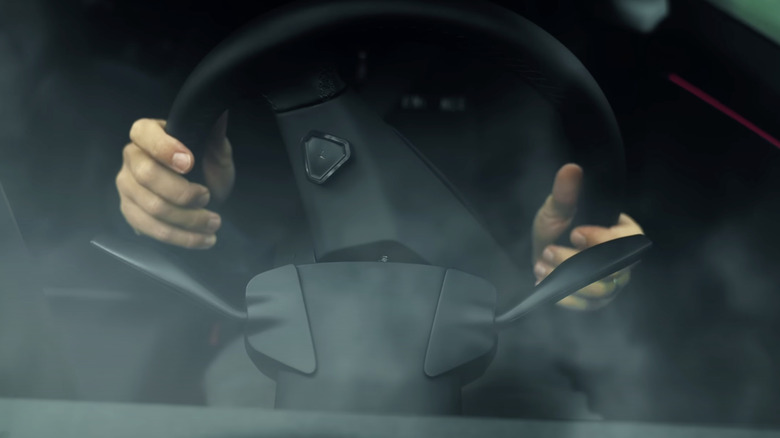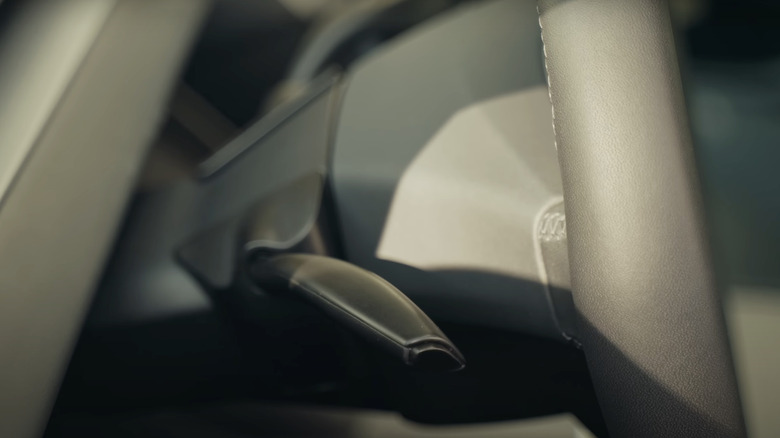Tesla Owners Are Installing Aftermarket Turn Signal Stalks - Here's Why
When it comes to designing cars, Tesla has never been one for playing it safe. Sometimes those risks pay off; at other times, they leave people baffled at the decision. One of the most recent head-scratchers came in 2021 when they ditched physical turn signal stalks on the Model S and X. The conventional stalks are no longer present in the newly stateside Model 3 Highland and the updated Model S and X. Rather, Tesla opted for tiny touch-sensitive buttons on the steering wheel.
While the choice certainly aligns with Tesla's philosophy of "less is more," it feels like a step backward for many drivers. In daily driving, you hardly give a stalk any thought; it's almost second nature with your hand knowing exactly where it is. When using buttons in fast-moving traffic, you have to look down, aim for the correct spot, and hope you hit it. It's a clunky system, and when you're signaling at 70 mph, you don't want clunky. There's already concern that Tesla's turn signal buttons are making it harder to pass a driving test.
It's not the first time Tesla has swapped simple for "futuristic", like when they decided to use cameras instead of cheaper, tried-and-tested rain sensors. Another choice that didn't go as planned, as issues with the focal length of the camera meant it had a hard time detecting rain. Tesla's continuing trend of constantly trying to reinvent automobile design is very evident, but Tesla owners on Reddit have mixed feelings about whether it actually enhances the driving experience.
A tactile fix from aftermarket stalks
There are certain things you should know before buying a Tesla, one of them being that they make some questionable design choices. As a result, there has been a boom in aftermarket parts in response to things that shouldn't need fixing, like signal stalks. The "S3XY Stalks," which are the handy creations of Enhance Auto, basically bring back what Tesla shouldn't have taken away in the first place. They look as if they are Tesla parts, clip onto the sides of the steering wheel, and function exactly like the vintage stalks that drivers miss.
The clever part is how they connect, though. For those concerned about voiding their warranty, there's no need to fret with S3XY Stalks. Older kits required disassembling the steering wheel and running wires into the car's internal components; now, a tiny box called the "Commander" is hidden close to the windshield and receives wireless communication from the stalks.
To add to the already apparent appeal, these aftermarket stalks are not just one-trick ponies. At the end of each stalk is a button that can be programmed to perform over 200 tasks, such as turning the wipers on, flashing the high beams, preheating your battery, and moving the passenger seat. They are powered by a basic battery with a lifespan of around a year, but it can be easily replaced when it runs out. Although they currently only support the new Model 3 Highland, support for the Model S and X will soon follow. From the demo videos and early reviews, they seem responsive, seamless, and, to be honest, appear to have been there from the beginning.
A growing disdain towards minimalism
Of course, these accessories do not come cheap. For just under $440, you can have the entire kit from Enhance, which includes both stalks, the Commander box, and all the needed supplies for the installation. People will eventually be able to purchase stalks separately or forego the Commander if they already have one, which should reduce the cost somewhat.
Paying hundreds of dollars for turn signals might seem absurd on paper, but it speaks volumes that so many Tesla owners are eager to get their hands on them. While innovation has its place, drivers often prefer interfaces that are straightforward and familiar. Tesla's button-only signaling has been criticized for adding complexity where it isn't needed. These aftermarket stalks are more than just a temporary solution. They're the perfect example of why you don't need to fix something that isn't broken. Traditional turn-signal stalks are reliable and intuitive, which is why the aftermarket is stepping in to provide the features that Tesla won't.


